Pharmacy App Development: All you need to know!
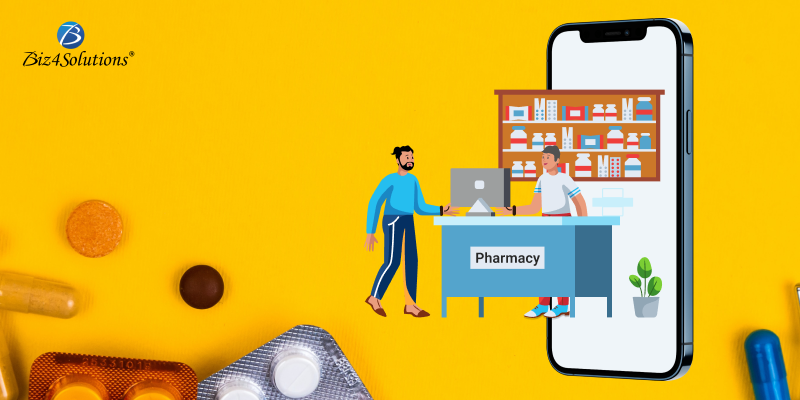
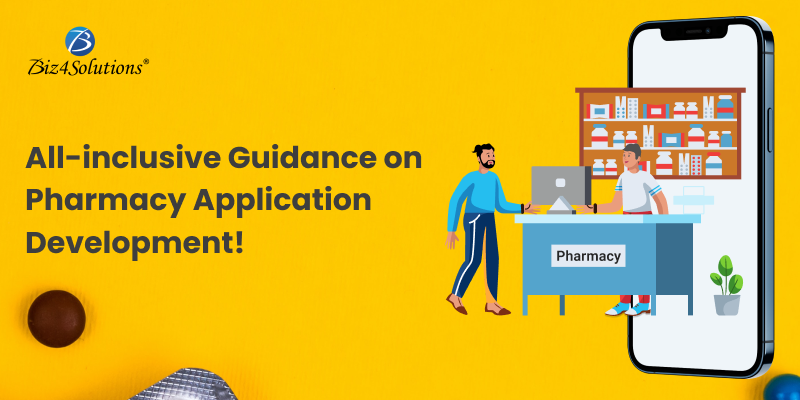
Online pharmacy apps have gained a lot of traction in recent years. Pharmacy providers as well as end-customers benefit from medicine delivery apps. Modern-era consumers prefer the convenience of online medicine ordering and doorstep delivery. Pharmacy services are utilizing apps as a tool for brand recognition and creating new channels for revenue generation.
Building an online pharmacy app is a great way to grow your business and establish your digital footprints amongst your target audience groups. So, this post explores pharmacy app development from different angles. A quick read will provide you with answers to the following questions:
What is a medicine delivery app?
What are the key Business Models of Pharmacy App Development?
What are the major Features to include in your application?
What are the advantages of Pharmacy Apps?
How to go about the online medicine delivery app development process?
So, let’s explore the different aspects of pharmacy app development!
What does an online Pharmacy App do?
A medicine delivery app allows consumers to order medicine online and get doorstep delivery. Buyers can choose from different options and reap the benefits of competitive pricing. Some pharmacy apps offer additional services like online booking of laboratory tests, preventive healthcare check-ups, etc.
Pharmacy App Business Models
You need to choose the right pharmacy app model that serves your business goals. The two most prominent online pharmacy app development models are the inventory-based model and the aggregator-based model.
Inventory-based Model
The inventory-based online pharmacy app model is applicable for licensed pharmacy businesses that have a huge inventory of medicines stored in offline stores or warehouses. Many of these businesses may operate through various regions as well.
This is how the inventory-based model functions. The ePharmacy receives online orders from consumers. Customers need to upload a valid scanned prescription or an ePrescription while placing the order. Then, a certified pharmacist verifies the prescriptions and the pharmacy dispenses medicines. Pharmacists pack the medicines inside a tamper-proof package and deliver them to consumers’ doorsteps using their in-house resources or a third-party delivery service.
Examples: Medlife, CareOnGo, Netmeds, and Myra.
Marketplace-based Model
The marketplace-based online pharmacy app model is an aggregator service; it connects the consumers to the pharmacy operators. It acts as a facilitator between licensed medicine suppliers and end-customers.
The owners of such pharmacy apps need not own medical supplies. They tie up with licensed medical providers or third-party pharmacies. The pharmacy providers registered with the app enlist their products on the website or mobile app. Consumers compare different pharmacies, choose products, and place orders. The marketplace app aggregates medicine orders from end customers, processes orders, and sends those orders to external pharmacy delivery drivers. Such an app is also called a Prescription delivery app. Pharmacies then verify the price and prepare the order. The pharmacy may also cancel the order if there isn’t any valid prescription against a specific order. The end customers get home delivery of their orders through a courier service.
Examples: PharmEasy and 1MG.
Pharmacy App: Key Features
Take a look at the basic and advanced features of a complete online pharmacy app development solution. A complete solution comes with different categories.
Customer App
Basic Features:
- A UI that’s easy to navigate
- User profile with the necessary details
- Registration/Login
- Prescription uploading
- Category-wise browsing with advanced search filters
- Medicine details with usage instructions & possible side effects
- Comparison of medicine pricing across various pharmacies
- Substitutes of unavailable medicines
- Saving order history and the option to repeat orders
- Order tracking
- Secured wallet system and multiple payment modes
Advanced Features:
- Automated prescription refilling reminders based on the previously uploaded prescription data
- In-app chat for real-time interaction with a certified pharmacist
- Chat options for addressing consumer concerns
- Multi-lingual capabilities
- Voice commands
- AI-powered personalized recommendations
- Consumer Loyalty Programs (points for each purchase that can be redeemed)
Admin’s Dashboard
Basic Features:
- User management & pharmacy management
- Order tracking & management
- Tracking received orders and incomplete/ongoing deliveries
- Managing Returns & Refunds
- Report generation in a few clicks
- Order verification
- Managing inventories & earnings
- Real-time notification on stocks – low inventory levels & drug expiry dates
- Performance tracking analytics & reports
- Customized Campaigns
Advanced Features:
- Consumer profiles integrated with EHR to get data on a patient’s past treatment history
- Aggregation with pathology & imaging labs displaying pricing information
- Number Masking to protect users’ identities (Only the admin & delivery agents have user information)
- CRMs for tapping prospects
Vendor’s Dashboard
Features:
- Vendor profiles with delivery histories
- Status of medicine availability along with timelines
- Push notifications related to order requests
- Management of order requests
- Real-time insights regarding medicine delivery drivers
- On-demand report generation on orders, sales, & daily transactions
Driver (Delivery Personnel) App
Features:
- Driver profile with the necessary details
- Tracking of location
- Information on delivery & order status
- Google Map integration to optimize routes
- Instant Notifications for completed deliveries & new order requests
Pharmacy App: Advantages
Consumer’s Perspective
Online pharmacy app users enjoy better accessibility to medicine delivery services and an elevated customer experience. An app allows consumers to order medicines and other related products from any store regardless of their location. Consumers can search for the desired medicines or medical equipment easily and quickly and that too from the comfort of their homes. Advanced search filters make the search activity more precise and save users time and effort. Users can get their prescriptions verified by licensed pharmacists. So, they can be assured that they are taking the correct medication and the right dosage, ruling out any chances of grave errors.
Users can compare the medicine prices and choose from multiple pharmacies. Some online pharmacy applications even allow consumers to schedule the order delivery at their convenient timings. For instance, one can set delivery hour preferences like post 5 PM or opt for weekend delivery. This benefits consumers with busy schedules. Real-time tracking enables customers stay informed about the delivery status of their orders. The customer support feature helps users resolve their queries and concerns in real time.
Reminders for taking medication and prescription refills before the stock of their current medication is over, are an added advantage for individuals using a pharmacy app. Moreover, online pharmacy apps adhere to security protocols. Hence, consumers’ data is safe and their purchases are kept private.
Also, patients get detailed information on a specific medicine and its side effects. Some pharmacy solutions offer add-ons like online healthcare consultations and booking of emergency services like ambulances. These services are real deal-breakers for several consumers.
Business’s Perspective
An online pharmacy app brings a lot to the table for pharmacy stores. Some examples are speedy medicine deliveries, 24X7 customer support, secure packaging, discounted offers on medicines, and crucial medicine-related reminders. As such, pharmacy stores leveraging apps can effortlessly gain customer loyalty. Also, you’ll be able to move your pharmacy business beyond the confines of your brick & mortar store and maximize customer outreach.
An app helps pharmacy owners to provide amazing customer experiences just as the consumers are looking for. This applies to not just medicine delivery but also other related services like medical tests, virtual doctor consultations, and many more. Modern-day pharmacy app developers are implementing more such disruptive features that add immense value to a pharmacy solution’s usability. The outcome is happy customers.
Pharmacy apps are quite effective in creating new avenues of revenue generation and boosting sales of pharmacy stores as well as pharmacy delivery aggregators.
Key Steps to develop an online Pharmacy App
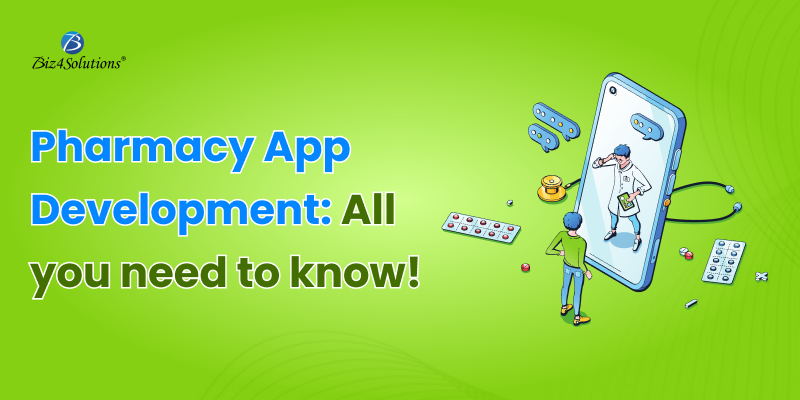
Define the Scope & Functionalities
Determine what purpose your pharmacy app will serve and which functionalities it will offer. Include a combination of generic and advanced features. Also, include USPs.
Pick the correct combination of Platform and Programming Languages
There are a wide variety of platforms and programming languages to choose from. You need to pick the right combination that fits into your existing skills and use case requirements. For example, choose the programming language Java for the Android platform and pick Swift if you are targeting iOS. If you plan to go for cross-platform development (android & iOS), React Native will be an apt choice.
Design the UI
Create the UI (User Interface) and UX (User Experience) design. While creating the design keep in mind that the UI should be clean and user-friendly. Make an intuitive design that is easy to use.
Develop the Backend of the App
The pharmacy app’s backend will communicate with servers and handle crucial tasks like data storage and processing. Develop the app’s backend to be reliable, scalable, and secure.
Integrate the necessary APIs
An online pharmacy app requires integration with certain external healthcare systems and devices for certain functions. So, integrate the necessary APIs so that your application can communicate with other services & systems like EHR (Electronic Health Records), drug databases, pharmacy management systems, etc. Integration with external healthcare systems will allow your app to offer additional features and data to end customers.
Test, Launch, & Maintain your App
Thoroughly test your pharmacy app to identify bugs and check whether the features are working as expected. For this, you can employ automated testing tools or hire a QA specialist for carrying out manual testing. I would recommend a combination of both- manual and automated testing – to achieve the best results.
Once you are satisfied with the app’s usability and sure that all the features are working as desired, it’s time to deploy your app. Launch your app in relevant stores like the Apple App Store and Google Play.
After your online pharmacy app goes live, maintain your app. Fix bugs and resolve issues at the earliest. Also, update your application with the latest features and security patches.
Are You Interested in Building a Top-Class Website or Mobile App?
Closing Views
Developing an online pharmacy app can be challenging. It requires a combination of software development skills, interface design capabilities, and knowledge of pharmacy delivery operations. You also need to know about the ongoing trends and most wanted functionalities consumers look for in a pharmacy app.
But, if you plan the product development lifestyle carefully, follow the best practices, and comply with mandated regulations like HIPAA; you can create a valuable solution. So, select the right Software development service for executing your project.
Essential Features to include in your Pharmacy Management System!
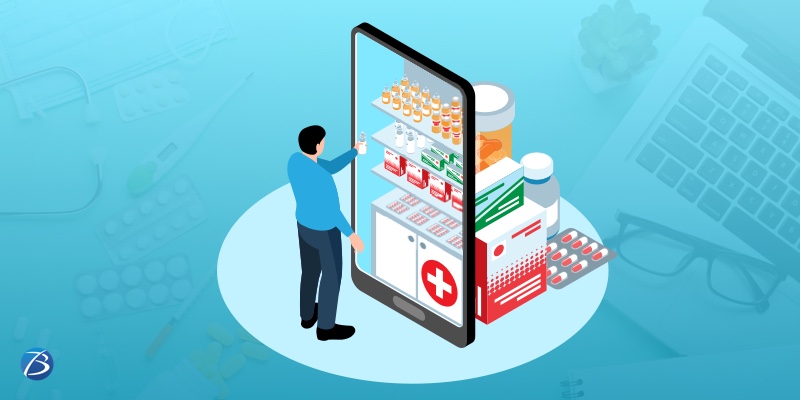
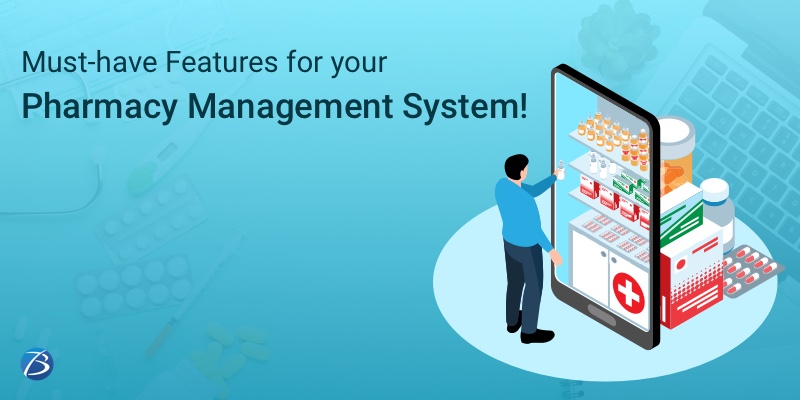
Digitalization has made its mark in every sub-domain of the healthcare sector, and the pharmacy industry is no exception. The advent of smart Pharmacy management systems has eased countless operational woes for pharmacy business owners. So, what is a pharmacy management system? Well, it’s a software system that has been programmed for carrying out various functions that are needed to operate a pharmacy business.
Versatile pharmacy software works wonders for pharmacy owners as well as consumers. A sound pharmacy solution automates and simplifies pharmaceutical functions like medication dispensing, identifying drug over-usage, etc. resulting in smart pharmacy management, reduced errors, and enhanced patient services.
Now the question that arises in your mind is; “What features to include in sound Pharmacy software?” This post provides you with detailed insights on the essential features to integrate within a modern-day pharmacy management software system. Let’s get started!
Pharmacy Management System: Essential Features

A Centralized Database for Data Storage
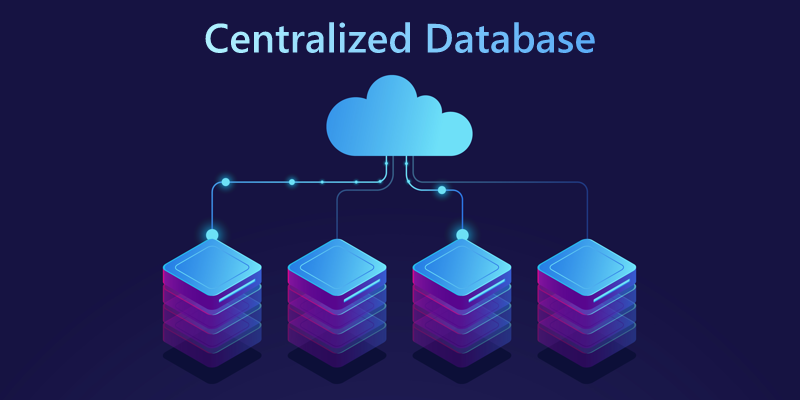
Data plays an important role in the pharmacy sector. Hence, a pharmacy business must ensure the safe and secure storage of data as well as a productive data processing mechanism. A pharmacy management system offers a centralized database for storing medicine-related data securely so that data is never lost and can be retrieved easily whenever needed. The system software also manages transaction records.
This feature adds to the patient’s convenience as it simplifies data search, ensures secure data access, and facilitates information collection about medicine availability. Providers reap the advantages of auto-generated drug reports, the need for a lesser workforce, improved communication between the pharmacy staff, real-time visibility into inventory and sales through advanced data analytics, and enhanced decision-making. The best part is that this centralized database is highly effective for businesses with small databases as well.
e-Prescription Generation
The usage of e-Prescriptions or electronic prescriptions is gaining momentum these days. Here’s how the process of e-prescribing functions?
A prescription is created electronically and then, transmitted from the prescriber to the pharmacy. Usually, a CPOE (computerized provider order entry) system like an EHR is employed for this purpose. The doctor creates a medication order using a CPOE system and sends it to the patient’s pharmacy through a secured connection. Once, the e-Prescription is generated, the pharmacy tracks the order and communicates whether that order was received and filled. Such communication between two systems is made possible with the usage of SCRIPT, a special XML-based standard. However, any type of prescription creation software needs to be Surescripts certified. So, healthcare entities generating ePrescriptions have to either get their system certified or pick pharmacy app development services that support Surescripts certification.
The e-Prescription feature saves paperwork, reduces the chances of human errors, and rules out the possibility of the prescription being lost or stolen. Moreover, as doctors can send medication refills directly to the pharmacy, medicines are speedily dispensed. Furthermore, patients availing of e-Prescription enjoy benefits like getting notified if they had missed picking up their order, creating order renewal requests with just a few clicks, and many more.
Synchronization with Real-time Information
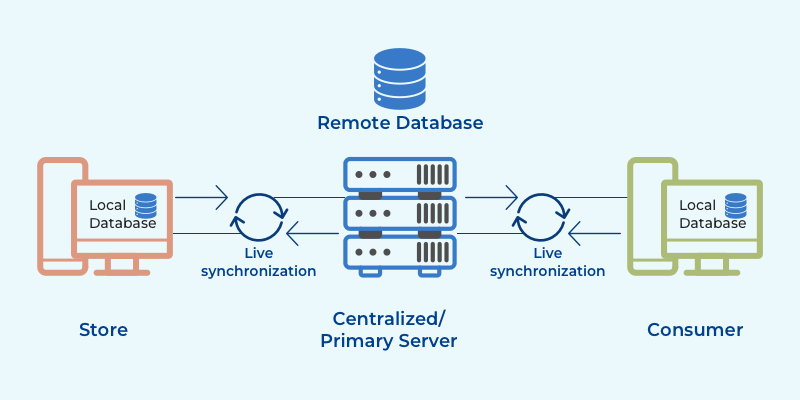
An ideal pharmacy management system need to consider situations like technical glitches and system crashes where the data can get lost in a split of a second. For this reason, the system must synchronize with real-time data including price-related updates, inventory updates, and auto-program updates. This feature promotes real-time interaction and hence, allows pharmacists to help patients with insurance forms as well.
Analytics & Report Generation
Pharmacies interact with countless patients daily. This data concerning patient interaction is immensely beneficial as it helps pharmacy businesses in understanding the requirement, planning the future course of action, and improving business strategies. This data can also be useful while carrying out audits, inspections, or certification processes in the future.
A pharmacy app records data of each patient interaction, stores it in the pharmacy information system, and generates classified sales reports that are organized product-wise and category-wise. These reports calculate the factors that determine medication sales and provide crucial insights into the business activities of a pharmacy service. Service providers can effortlessly identify purchase patterns like which consumers frequently visit the pharmacy for medicine refills and what kind of medicines they order, which medicines are in demand at a particular season, etc. This way, pharmacy wholesalers/vendors can stock medicines as per the consumer requirement, be sufficiently equipped to handle the demand surge for specific drugs during a particular season like the flu season, and devise profitable marketing strategies.
Implementing an ERP system will help in handling monitoring & analysis activities and statutory audit checks.
Reports reveal a great deal about the current performance metrics of a pharmacy, the areas of improvement for boosting the ROI, and the budgeting roadmap that need to be followed. Data analytics reports also help pharmacy owners to detect suspicious patterns and check anomalies within their operations. Overall, reports lead to more informed decisions and increased revenues.
Necessary Integrations
An effective pharmacy management system must be able to integrate with other healthcare systems to facilitate the seamless flow and consistency of medical data. Let’s take a look at the commonest integrations needed. Interaction with a medical facility’s EHR enables the pharmacy solution to access the treatment records, as well as the medical history of patients, and integration with the logistics system helps in timely medicine distribution. Pharmacy software also needs to integrate with billing systems, hospital management systems (HMS), relevant external platforms, etc.
Dashboard
An in-built dashboard that provides actionable insights is of prime importance in a complex pharmacy management system. The presence of a dashboard helps pharmacy providers track the amount of medicines that are produced and the amount of wastage as well. Dashboards offer KPIs (Key Performance Indicators) through focused charts and reports. The KPI reports are based on the service provider’s key goals and display only those pieces of data that the pharmacy owner requires to fulfill a specific objective they have set. Therefore, this data not only boosts data analysis but also enhances business productivity and collaboration.
Support for SMS Alerts and Multi-store/Multi-location Management
The feature supporting SMS and notification allows pharmacists to get intimated whenever any patient’s medication is about to expire and they need a refill. Pharmacy staff then notifies patients via text messages before their prescriptions run out and patients can inform the pharmacist that they need a refill by just responding to the message received. Also, pharmacists can continuously stay in touch with consumers through status updates, thereby elevating the patient experience.
If pharmacy software offers multi-store and multi-location support, owners can manage the functioning of several stores at different locations. Pharmacy providers can view the exchange of electronic data concerning sales, returns, stock levels, etc., and also calculate the profits made by the entire pharmacy chain.
Medication Order Management
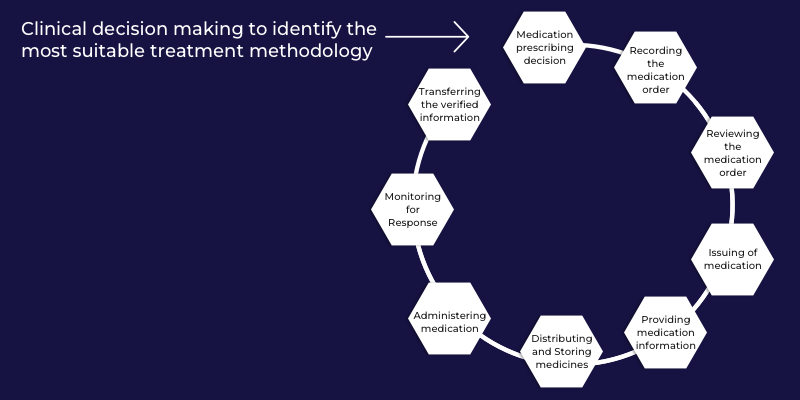
A pharmacy management system makes use of reordering points or the pharmacy-defined par levels for generating automatic orders. Thereafter, it calculates the number of items required for raising the stock level; it then adds the required quantity of items to the order. An EDI (Electronic Data Interchange) methodology is used for delivering the orders.
Managing Medication Expiries
Pharmacies suffer losses on account of expired drugs. Since pharmacies buy medication from whole sellers in bulk, every medicine has a different expiry date and MRP. Therefore, it becomes challenging for pharmacists to keep track of the expiry dates of each medicine. As a result, several drugs get expired while lying on the shelves of pharmacies without the knowledge of pharmacists and the pharmacy owners come to know about it only after the date of expiry, leading to medication wastage.
A pharmacy management system having the expiry management functionality notifies the owners about the expiry dates of medicines well in advance. This provides pharmacy owners the option to either sell those medicines to customers or return them back to the supplier. This way, wastage of medicines and financial losses can be avoided.
Management of Medication Re-ordering
The medication re-orders management feature provides critical insights that help pharmacists to stay informed and organized. Right from establishing re-order points, to finding out when to replenish the stock, and determining which product fares better in the inventory, this functionality does it all.
Pharmacists have to pre-define the maximum and minimum stock level margins, and then feed this data into the system. Now, the system alerts them whenever the stock level goes below the minimum point prompting them to reorder. It also suggests the best purchase option to the user, as per the programs offered by nearby suppliers, and recommends purchase schemes that offer super-saving options.
Module for User Management
A user management module helps pharmacy providers effortlessly set access-related preferences for different groups of users in order to reserve certain features for specific users. This includes restricting access to certain features for different audiences. The functions of this module can be segregated into two categories – Administrator User and Administrator Authentication User.
The Administrator User Module empowers the user to control the buying-selling process and carry out actions like viewing the medication stock available in the pharmacy; enlisting the medicines they need, tracking the pharmacy map, etc. This category of user management regulates the daily processing of stocks and sales.
The Administrator Authentication User Module allows the authenticated users to view every process including the transactions, sales reports, etc., manipulate the medication lists as well as stocks, track their everyday activities, and generate daily accounts using the multi-site software.
Inventory Management
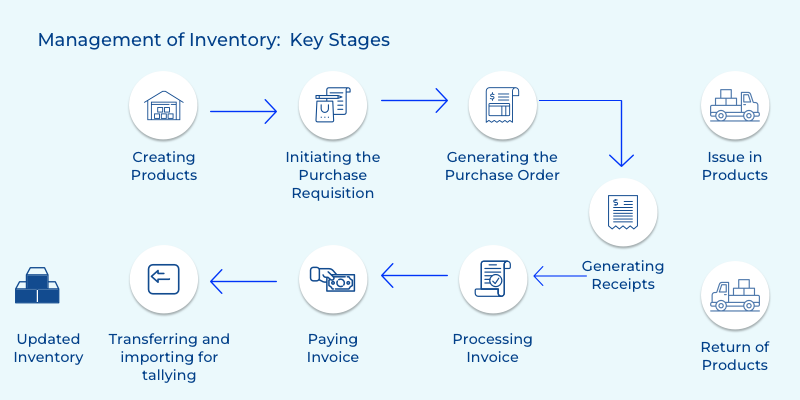
The module for managing stocks in the inventory proves very handy to pharma owners. This feature integrates an EDI or APIs to order data. The offerings include classification of inventory products based on their categories, receiving as well as generating automatic orders, drug dispensing, managing out-of-stock products, and providing inventory counts and print labels. The software generates inventory reports that enable the suppliers and pharmacists to identify the best-selling products and figure out which drugs are affecting the distribution and ordering processes.
Sales Management Modules
Billing and accounting tasks in a pharmacy are often prone to errors. Nevertheless, an efficient pharmacy management system offering the sales management feature can optimize such tasks and eliminate the chances of errors. Here, the system automates the tasks of receiving orders, executing payments, and generating receipts; then add these tasks in reports.
The sales management module correctly matches the product codes to formulate their accurate prices, resulting in error-free billing. POS or point-of-sales module offers patients a wide range of options for making payments and completing returns.
Some billing modules offer electronic signatures and options for managing patient data and loyalties. And, if patient data is connected with billing histories, smart analytics utilizes this data for creating real-time financial reports and provides recommendations on improving patient experience.
Managing Prescriptions and Doctor Commissions
Difficulty in reading prescriptions by the patients and pharmacists has always been the source of confusion and errors in drug dispensing. The usage of a competent pharmacy management system resolves such woes as the data is directly entered by the doctor and electronically stored within the system.
The system also tracks pharmaceutical transactions to identify which practitioner has created a particular prescription or which medical representative is involved in a specific transaction with the pharmacy regarding medication sales. Such software instantly calculates the doctor/MR commission generated by the pharmacy for each medicine sold out and each prescription involved.
Compliance with Standard Regulations
Compliance with standard regulations mandated by authorities is essential for any pharmaceutical practice. So, a pharmacy management system must be compliant with the latest security practices and evaluation parameters mandated for activities like e-prescription generation, medication ordering, medicine refill, etc.
For instance, DSCSA (Drug Supply Chain Security Act) prohibits US pharmacies to dispense fake medicines and thus protects the citizens from counterfeit medication. Canadian pharmacies have to comply with the regulations defined by NAPRA and European pharma stores need to verify the authenticity of each medicine by employing a point-of-dispense validation system.
Bottomline:
I hope this post was informative and has given you a clear idea of which features to add while executing the pharmacy app development process. However, you need to pick the features as per your requirement and business objectives.
If you are a novice in the software development arena, it would be advisable to team up with skilled healthcare app developers or a reliable IT firm that has extensive experience in pharmacy app development. Your partner will take care of your pharmacy software development project right from app ideation to deployment.
